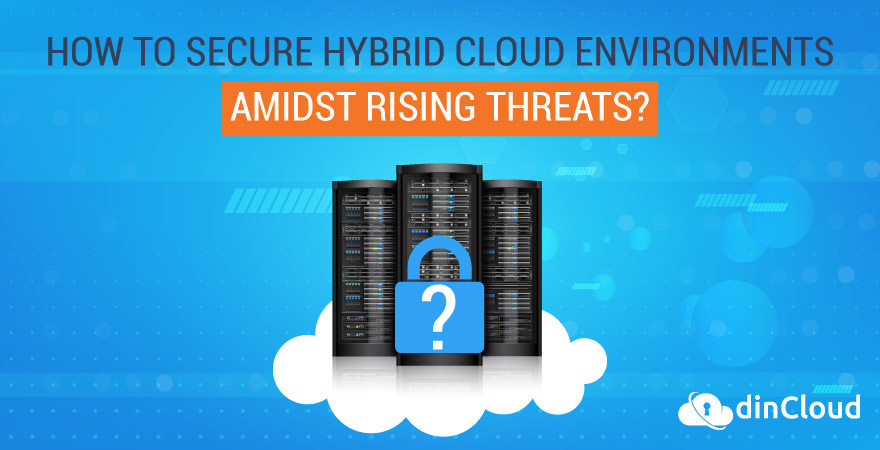The current cyber landscape is one that is very hostile. With remote work becoming a mainstream trend, the overall threat surface has increased exponentially. When you tack on the unique challenges of a hybrid cloud, things get even more interesting.

The foremost question here is that, if hybrid cloud environments are so difficult from an administrative and security standpoint, why do enterprises choose them in the first place? Well, a well conceived and executed hybrid cloud has a lot of potential benefits to offer.
Why a Hybrid Cloud?
The foremost benefit of the hybrid cloud is that it enables you to allocate workloads as per your unique preferences, between the on premise hardware and the cloud infrastructure. These priorities may relate to governance, compliance or sensitivity of the data involved.
Regardless of the motivating factor behind the hybrid cloud, it enables enterprises to enjoy the highest degree of control over mission critical or sensitive data, while also allowing the flexibility and scalability that is associated with the public cloud.
Then, with a hybrid cloud, enterprises feel much comfortable when they no longer have to worry about the dreaded vendor lock-in. Most enterprises consider this as a source of future vulnerability, if they become heavily invested in one particular service provider.
So, all these factors combined, make a sound case for the hybrid cloud. However, the hybrid cloud also raises a host of security related challenges. Firstly, there are multiple protocols that you have to understand and sync to secure the whole environment.
You can break down the hybrid cloud security into three major components and in this post, we will cover each of these in fair detail.
Physical Controls
This discussion applies on both the data which you retain on premise, and the segment that you entrust to a public Cloud Service Provider (CSP) like dinCloud. The physical controls include elements such as surveillance cameras, locks and guards etc.
For the on premise hardware, you will have to define these parameters and also invest in the necessary enabling mechanisms or equipment. In the case of your cloud provider, you will need to consider these elements when choosing the cloud provider in the first place.
dinCloud for instance, deploys a combination of both physical and virtual controls to secure its cloud infrastructure, data centers as well as user’s data. Our data centers comply with independently defined international standards for physical and other forms of security.
Technical Controls
These are perhaps one of the most critical set of controls that you need to secure a hybrid cloud environment. While the nature and degree of each such control will vary, these generally include encryption, end user authentication and intrusion prevention etc.
So far as encryption is concerned, it is best if you employ encryption to data both at rest and while it is in transit. Encryption is a great line of defense, even if your data does fall into the wrong hands for whatever reasons.
Network and user authentication are the next vital line of defense in hybrid cloud security. Access to the network, whether it relates to on premise data or the cloud data center, should only be granted after successful authentication of network traffic.
But the control that goes a step ahead in this regard is end user authentication. At dinCloud, we use a robust Two Factor Authentication (2FA) mechanism that each end user must pass through, before access to any data is granted.
Administrative Controls
The onus of administrative controls lies more on the deploying enterprise as compared to the Cloud Service Provider. These include simple yet critical components such as employee awareness, training and planning for contingencies or disasters.
By making your employees constantly aware and updated about the emerging cyber threats out there, you are staying a step ahead of the cyber miscreants out there. You can avert many mishaps in hybrid cloud security, just by improving employee awareness.
Lastly, the most important component of hybrid cloud security is preparedness for contingencies or disasters, in the event that something bad really does happen. In such situations, containing the damage and ensuring Business Continuity (BC) are key.
Conclusion
Like security in general, hybrid cloud security is also a journey rather than a destination. With the right vision, sense of direction, capacity and the will to adopt a security centric approach, there is no reason why you cant achieve a secure hybrid cloud environment.
Contact dinCloud for secure, robust and reliable cloud solutions for your enterprise needs, whether its standalone solutions or hybrid ones.


